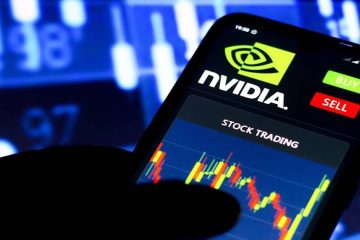There Have Been Two Times in History Stocks Have Been This Expensive: 1929 and 2000

The S&P 500 hit a new all-time high on July 26, lifting gains for the year to 20.7%, the best performance for the first seven months in 22 years, and within a whisker of beating that 1997 record of 21.5%. That breakout is wonderful for folks who showed the grit to stay invested during the big downdraft late last year. But the explosion in prices has made a longstanding problem worse: High prices today mean puny gains tomorrow.
From these levels, what returns can investors reasonably expect?
The price-to-earnings ratio for the S&P 500, based on the last four quarters of net earnings, now sits at 22.5, up from 18.9 at the close of the fourth quarter. That multiple stands well above the average of 19 for the last two decades, not to mention the reading of around 16 over the past century. Multiple expansion as a source of gains seems tapped out. The market’s P/E has been stuck in the low-20s, except for the brief drop in late 2018, for the past four years.
What’s driven prices skyward is an historic explosion in earnings. S&P 500 earnings-per-share have jumped 47% from mid-2015 to Q2 of this year, to a record of $ 134.39 in Q1. Don’t count on earnings growth to provide much more fuel. Profits appear in a near-bubble. They account for 9.5% of national income, versus the long-term average of 7.5%, and operating margins are running 9.41%, one-quarter higher than when the economy regained its mojo in mid-2016.
Profits are already slowing. The latest survey of analysts by research firm Factset forecasts a year-over-year decline in Q2 of 1.5%, following a flat first quarter. So given their already gargantuan size, and the current downward drift, don’t count on big profit gains to propel share prices.
Since markets are hitting the wall on both multiple expansion and profit growth, the best hope is that P/Es remain where they are, and profits advance at a far more moderate pace than the fantastic gains since 2015.
Bear with us: A crucial number is the current earnings yield. That’s the ratio of the earnings a company generates each year to its market value—in other words, the dollars in profits investors are getting for each dollar they pay. (The earnings yield—earnings divided by price—is the inverse of the P/E, price over earnings.) At today’s 22.5 P/E, the current earnings yield is around 4.5%, plus inflation that’s running at 1.5%, for a total of roughly 6%. If the market multiple stays where it is at 22.5, future returns––in the form of dividends, buybacks and capital gains––will total 6%. That’s the market math.
But even that modest number is probably too high. That’s because earnings are now hovering at such etherial heights that economic gravity is likely to force them downwards. Yale economist Robert Shiller favors a more realistic P/E called the cyclically adjusted price to earnings ratio, or CAPE, which uses a 10 year average of inflation-adjusted profits as the denominator in his P/E. That methodology smooths the peaks and valleys in profits that can make stocks look artificially cheap or pricey. Shiller’s adjusted P/E right now? 31. It’s only been that lofty twice, just before the 1929 market crash, and in the run-up to the dot.com bubble in 2000. The Shiller P/E’s message: High multiples on top of inflated profits equals low future returns.
If we use the Shiller multiple, the earnings yield, and the expected return, drops from 6% to 4.7% (that’s the inverse of the 31 P/E plus 1.5% inflation). Soaring earnings won’t keep bailing out the market. You can have high valuations and high returns for a while, but the high returns don’t last. Eventually, rich valuations are bad for tomorrow’s gains, and today’s valuations, as the Shiller numbers show, are even richer than they appear. Keep in mind that maintaining today’s P/Es is a best case scenarios. If earnings growth keeps slowing, and P/Es drop as well, stock prices will follow.
Until then, take the advice Wall Street won’t give you: Downsize your expectations.
More must-read stories from Fortune:
—Meet the A.I. landlord that’s building a single-family-home empire
—You might have longer than you think to invest for retirement
—Facebook’s Libra currency could threaten the global financial system
—The surprising way Republicans used to use immigration to boost the economy
—One of Warren Buffet’s favorite metrics is flashing red. Corporate profits are due for a hit
Don’t miss the daily Term Sheet, Fortune‘s newsletter on deals and dealmakers.










